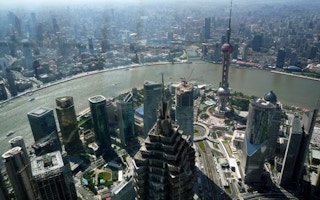Asia’s burgeoning cities may emit vast amounts of greenhouse gases (GHGs), but climate change watchdogs should investigate further before pointing fingers.
A new study examines the causes of greenhouse gas emissions for 100 cities across 33 nations and determines that effective policies for climate change control require a better understanding of urban emissions.
Statistics on rapid urbanisation around the globe are often cited along with figures for cities’ contributions to global warming. The World Development Report 2009 states that by 2050, 70 percent of the world’s nine billion people will live in urban areas. Given that cities produce up to 80 per cent of the world’s CO2 emissions, world leaders are understandably concerned about the urbanisation trend.
In 2005, mayors from the world’s largest cities formed The World Mayors Council on Climate Change. The aim was to take climate change policies to local levels, rather than relying solely on multilateral talks between national governments. Council members, which now number over 50, co-organise the World Mayors Summit on Climate, which runs parallel to the United Nations Climate Change Conferences.
These leaders need better information to effectively fight climate change, argues Daniel Hoornweg, who is lead author for the study and an urban specialist on Cities and Climate Change at the World Bank. “Policymakers need a better understanding of the sources of emissions if they are to develop real solutions,” he said.
Mr Hoornweg said that many figures on urban emissions are misleading. Often the figures given are for a city’s overall production, and don’t reflect the environmental footprint of the residents: “Differences in production and consumption patterns between cities and citizens mean that it is not helpful to attribute emissions to cities as a whole.”
Even within a single city, GHG emissions can vary significantly. In Toronto, for example, residents of the inner city average 1.3 tonnes of CO2 compared to 13 tonnes per person in the city’s sprawling, car-reliant suburbs.
Despite their reputations as big emitters, cities provide many advantages for sustainable living such as centralised planning for water, energy, and waste management, in addition to promoting more efficient use of space. The study’s authors stress that cities themselves are not the problem; they bear the brunt of excessive consumption habits of the world’s wealthy populations.
“This paper reminds us that it is the world’s wealthiest cities and their wealthiest inhabitants that cause unsustainable levels of greenhouse gas emissions, not cities in general,” said Dr David Satterthwaite, who is the editor of Environment and Urbanization and a senior fellow at the International Institute for Environment and Development.
Densely-packed wealthy cities in the West may have low per person emissions figures due to public transport and less reliance on manufacturing. But add in their high consumption of goods produced elsewhere, such as China, and their GHG contributions rise significantly.
“Lifestyles and consumption patterns are key drivers of greenhouse gas emissions…in far off cities, as in the case of Western consumer demand for Chinese goods,” says Hoornweg. “From the production perspective Shanghai has high emissions but from the consumption perspective its emissions are much lower.”
This supports China’s stance in international climate change negotiations that many of its emissions evolve from providing goods consumed in developed countries. China has been setting ambitious internal targets for CO2 emissions but has resisted binding targets imposed internationally, arguing that high consumption countries such as the U.S. must take responsibility as well.
Understanding the causes of rising emissions will be increasingly important in Asia. Of the world’s 958 cities with populations greater than half a million, 52 per cent are in Asia. That percentage will only get bigger, with China leading the way.
As Asian city dwellers become wealthier, however, their consumption habits risk expanding to Western levels.
“Most cities in Africa, Asia and Latin America have low emissions per person. The challenge for them is to keep these emissions low even as their wealth grows,” states the author.
The study will be published in April in the peer-reviewed journal Environment and Urbanization by Sage Publications and the International Institute for Environment and Development.










